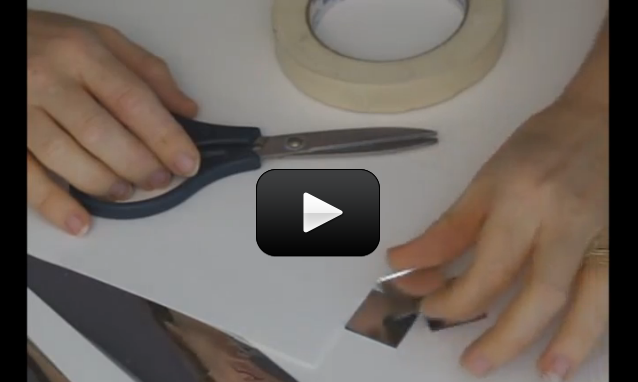In a simplest sense, a kaleidoscope is a tube lined with mirrors. Whether you leave the end opened or tape on a bag of beads is up to you, but the main idea is to provide enough of an optical illusion to wow your friends. Did you know that by changing the shape and size of the mirrors, you can make the illusion 3D?
If you use only two mirrors, you’ll get a solid background, but add a third mirror and tilt together into a triangle (as shown in the video) and you’ll get the entire field filled with the pattern. You can place transparent objects at the end (like marbles floating in water or mineral oil) or just leave it open and point at the night stars.
The first kaleidoscopes were constructed in 1816 by a scientist while studying polarization. They were quickly picked up as an amusement gadget by the public and have stayed with us ever since.
Materials:
- three mirrors the same size
- tape and scissors


The patterns would look very different with four mirrors.
What would happen if I put 4 mirrors instead of 3?
Mylar is available through hobby stores, hardware stores, and even Amazon.
Where can I find Mylar?
Yes please find this information in LIVE CLASSES –> October and scroll down to the bottom third of the page. You’ll find the template and a step-by-step instructional video.
I’m sorry, we missed where to find instructions on making the starburst kaleidoscope. Could you share a link for that?
You really need mirrors or Mylar for this experiment. Most aluminum foil isn’t reflective enough for this project.
Can I use aluminum foil in place of the mylar if I handle it carefully? [I don’t have mylar {or mirrors that are the right size}]
The mirrors are more reflective than mylar, so the mirrors will show more detail. But both mylar and the mirror versions will show colors.
it looks cool. does it show more colors if its a index card one or a long mirror one?
What specifically did you want to ask? Make sure you you are logged in to see the questions box.
where is the mathamagic comment box